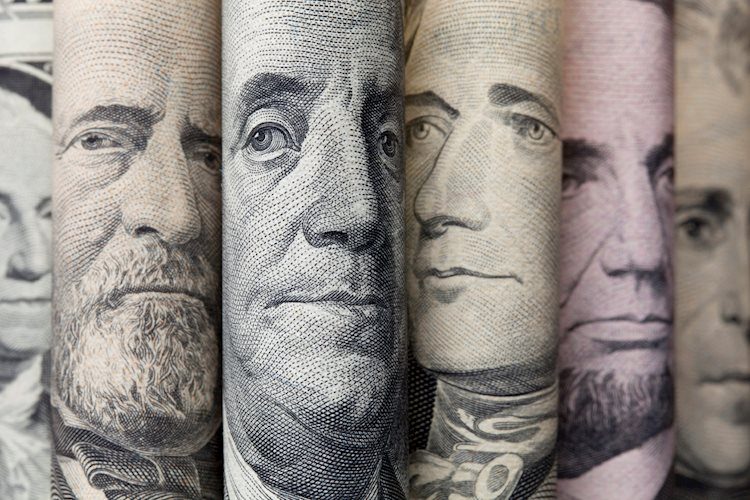- US Dollar depreciates as investors digest inflation data.
- Fed rate cut expectations rise following dovish comments.
- On the data front, Consumer Confidence improves slightly in early September.
The US Dollar Index (DXY), which measures the value of the USD against a basket of currencies, is posting losses on Friday as markets continue digesting this week’s inflation data. At the end of the week, there was a slight increase in expectations that the Federal Reserve may cut interest rates by 50 bps in the next week’s meeting.
The US economy remains robust, with growth exceeding expectations. However, financial markets may be overestimating the likelihood of aggressive monetary policy easing. This is evident in the elevated valuations of certain assets. Investors should exercise caution and consider that the economic outlook may not warrant the current pricing practices.
Daily digest market movers: US Dollar Index declines as Fed decision looms
- “Fed whisperer” Nick Timiraos suggested that the decision could be a “close call,” raising the odds of a 50-basis-point cut from 10% to nearly 50%.
- The market now prices in nearly 125 basis points of easing by year-end and 250 basis points over the next 12 months.
- On Thursday, August Producer Price Index (PPI) data was in line with expectations, with headline inflation at 1.7% YoY and core inflation at 2.4% YoY.
- On Friday, Consumer Confidence improved slightly in early September, with the University of Michigan’s Consumer Sentiment Index rising to 69 from 67.9 in August.
- The details of the survey showed that one-year inflation expectations declined to 2.7% from 2.8%, while five-year inflation expectations rose to 3.1% from 3%.
DXY technical outlook: Bearish momentum resumes
Technical indicators for the DXY index have resumed their downward trajectory, falling into negative territory. Notably, the index has breached below its 20-day Simple Moving Average (SMA), indicating a shift in momentum toward the downside.
The Relative Strength Index (RSI) and the Moving Average Convergence Divergence (MACD) also confirm the bearish bias. In light of these developments, further declines in the DXY index are anticipated in the near future.
Key support levels to watch include 101.60, 101.30 and 101.00, while potential resistance levels lie at 101.80, 102.00 and 102.30.
US Dollar FAQs
The US Dollar (USD) is the official currency of the United States of America, and the ‘de facto’ currency of a significant number of other countries where it is found in circulation alongside local notes. It is the most heavily traded currency in the world, accounting for over 88% of all global foreign exchange turnover, or an average of $6.6 trillion in transactions per day, according to data from 2022. Following the second world war, the USD took over from the British Pound as the world’s reserve currency. For most of its history, the US Dollar was backed by Gold, until the Bretton Woods Agreement in 1971 when the Gold Standard went away.
The most important single factor impacting on the value of the US Dollar is monetary policy, which is shaped by the Federal Reserve (Fed). The Fed has two mandates: to achieve price stability (control inflation) and foster full employment. Its primary tool to achieve these two goals is by adjusting interest rates. When prices are rising too quickly and inflation is above the Fed’s 2% target, the Fed will raise rates, which helps the USD value. When inflation falls below 2% or the Unemployment Rate is too high, the Fed may lower interest rates, which weighs on the Greenback.
In extreme situations, the Federal Reserve can also print more Dollars and enact quantitative easing (QE). QE is the process by which the Fed substantially increases the flow of credit in a stuck financial system. It is a non-standard policy measure used when credit has dried up because banks will not lend to each other (out of the fear of counterparty default). It is a last resort when simply lowering interest rates is unlikely to achieve the necessary result. It was the Fed’s weapon of choice to combat the credit crunch that occurred during the Great Financial Crisis in 2008. It involves the Fed printing more Dollars and using them to buy US government bonds predominantly from financial institutions. QE usually leads to a weaker US Dollar.
Quantitative tightening (QT) is the reverse process whereby the Federal Reserve stops buying bonds from financial institutions and does not reinvest the principal from the bonds it holds maturing in new purchases. It is usually positive for the US Dollar.




